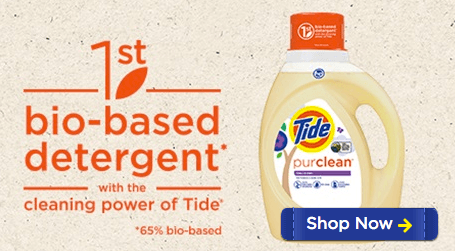
P&G first test-marketed Tide laundry detergent shortly after the end of World War II. Introduced in 1946, it soon became the top-selling laundry detergent in the U.S., surpassing iconic brands such as Rinso and Ivory Snow in popularity. Now Tide can be found in just about every overseas market. Arguably the product that transformed how laundry detergent is manufactured and marketed, Tide is even in a hall of fame of sorts: 10 years ago, the American Chemical Society designated the product a “National Historic Chemical Landmark.”
But Tide’s success is about more than marketing, as consumers obviously believe it works — and that explains why the brand survived from our grandparents’ generation while other household products disappeared from supermarket shelves. But now, P&G and its competitors in the consumer packaged goods (CPG) sector are forced to reinvent themselves as new products hit the market. And when compared to Tide’s list of unpronounceable ingredients, the reality now is that many believe products such as Seventh Generation, Mrs. Meyer’s, Method, and the plant-based, private-label products available in stores such as Whole Foods and Trader Joe’s are overall better for the environment.
So P&G responded with a new Tide product released last week. Tide purclean has the “trusted cleaning power” of its venerable detergent, P&G says, with the added bonus of a 65 percent bio-based formula.
Part of the struggle plant-based products come up against is that CPG companies have convinced us that we need their products in order to keep our homes, clothes ... and ourselves ... clean. At the same time, more consumers want their purchases to mitigate their effect on the environment. The result is a struggle for companies trying to pitch "eco-friendly" consumer goods.
Over the years, many consumers complained that plant-based products just do not work as well as those made with conventional ingredients. Of course, when it comes to detergent, old tricks such as adding citric acid, white vinegar or baking soda to a load of laundry can help make those clothes (and households at large) clean, but changing those habits is a tough sell.
P&G’s new detergent confronts both of those challenges. Many of the 17 ingredients in the Tide purclean product are plant-based. The company is ambiguous about the plants from which those components are sourced. But, in a recent Twitter chat with TriplePundit, a representative from the EPA's BioPreferred program said bio-based feedstocks often come from plant waste and algae.
For now, this new plant-based Tide detergent is a victory for one organization: the U.S. Department of Agriculture (USDA). In fact, P&G scored an endorsement from USDA secretary Tom Vilsack, who recently has often repeated his department’s claim that bio-based products contribute approximately $369 billion and 4 million jobs to the U.S. economy. The USDA launched a bio-based products program in 2011, which first, encourages the federal government to procure more bio-based products; in addition; a voluntary labeling initiative allows for a label to appear on products such as Tide purclean. The “USDA Certified Biobased Product” label has struggled to gain traction, however, in part because it has been promoted by agribusiness interests who wanted to have their say in the 2008 Farm Bill. Most environmental groups have responded to this initiative with silence. [Ed. note: we'll be taking a deeper look at the biobased certification next week].
Nevertheless, P&G's latest new product shows that the company is aware of consumers’ growing awareness and shift in buying habits. This new Tide detergent is another step, along with waste diversion and experimenting with plant based ingredients, in P&G’s quest to show that it is a more responsible and sustainable company.
Image credit: Tide.com

Leon Kaye has written for 3p since 2010 and become executive editor in 2018. His previous work includes writing for the Guardian as well as other online and print publications. In addition, he's worked in sales executive roles within technology and financial research companies, as well as for a public relations firm, for which he consulted with one of the globe’s leading sustainability initiatives. Currently living in Central California, he’s traveled to 70-plus countries and has lived and worked in South Korea, the United Arab Emirates and Uruguay.
Leon’s an alum of Fresno State, the University of Maryland, Baltimore County and the University of Southern California's Marshall Business School. He enjoys traveling abroad as well as exploring California’s Central Coast and the Sierra Nevadas.














